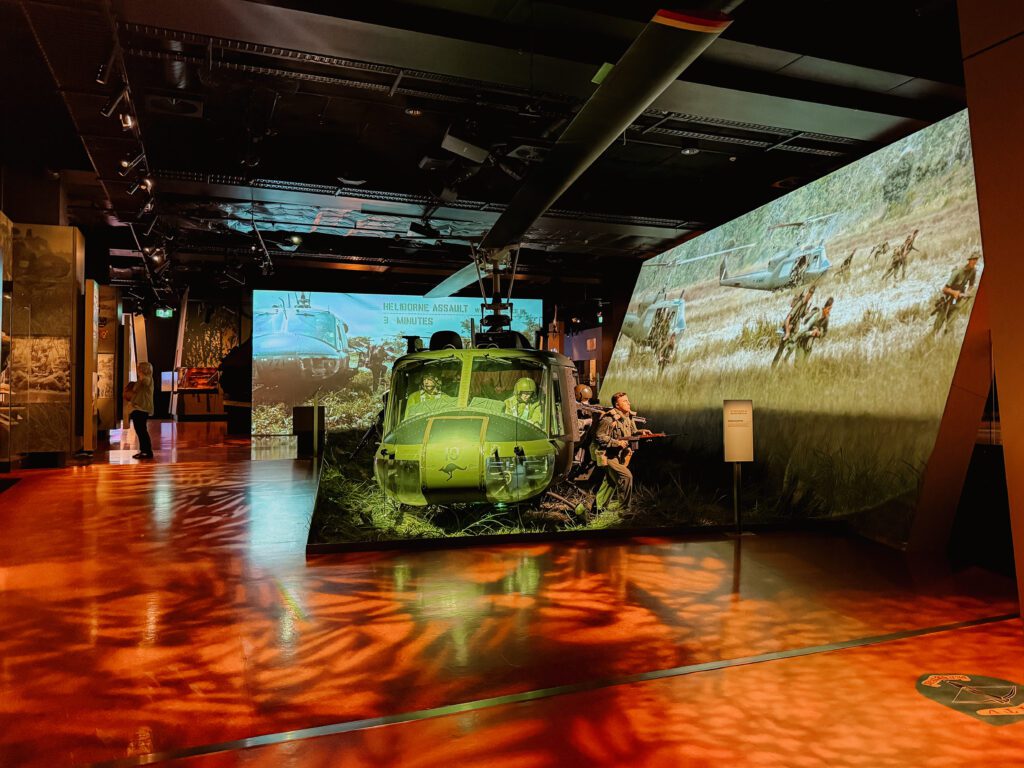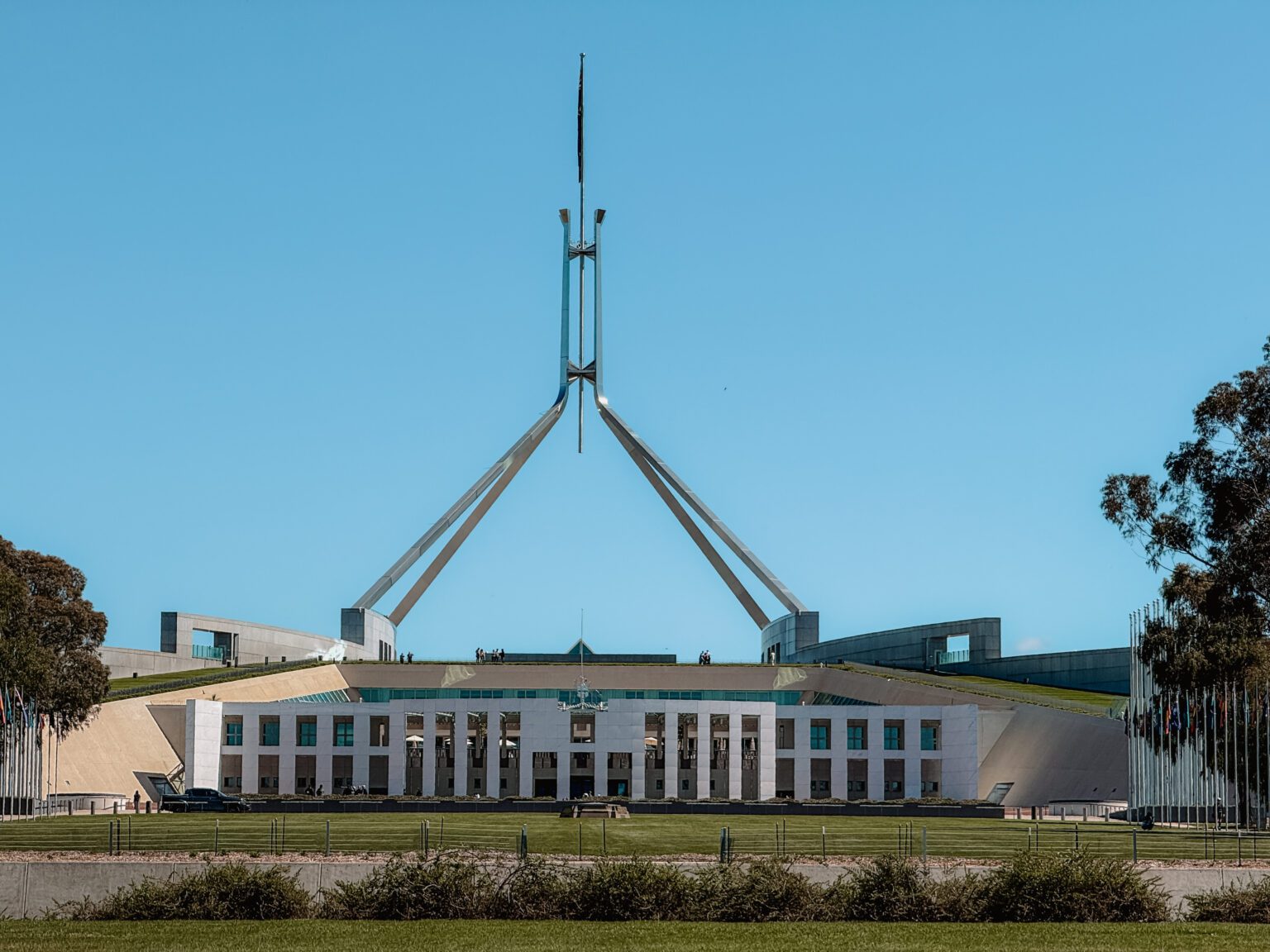Canberra is the capital of Australia (are you surprised it’s not Sydney?) and is a hub to learn more about the recent history of the country, especially after the colonialism of the British Empire, and the current state of democracy within the country. If you are looking to learn more about the way the country operates and its political history since the early 1800s, then this is the town for you.
Note: The city is heavily centered around government buildings and processes. It is not necessarily a tourist or cultural hub within Australia and may not be a priority for tourists from other countries to visit. However, if you are planning to spend a lot of time in the country or are even from Australia, it could be important to visit to get a grasp of the important moments and features that impact society in Australia today.

Where to Stay in Canberra
Barton or Kingston
If you are most interested in seeing the different museums because it is walking distance to many of the museums listed in this article.
Braddon
If you want to balance the museums with restaurants, pubs, and bars, then consider staying in this more vibrant and active area.
Museums of Canberra Worth Looking Into
Because Canberra is a city designed to be the government center of the country, it has many national museums regarding the history and current culture of the entire country. There are a variety of museums that include government history, art, government operations, and more. In addition, these museums are free and many include guided visits that give you even more information about each topic. Below are the primary places to visit when in Canberra.
Parliament House (1-2 Hours)
The Parliament House is the current center of government in Australia. It is where laws are created, debated, and voted on and it is completely free and open for anyone to visit. If you go during the week, you may have the opportunity to observe a parliamentary debate in either the House of Representatives or the Senate. Even if nothing is happening at the Parliament House, you can still tour through the building and see the two Parliament rooms. The building has a few different tour options that happen throughout the day. Every hour, they host a free, 30-minute tour of the building, taking you to one of the two Parliament rooms, all while explaining how the government of Australia works. The Parliament House also provides longer paid tours that go into more detail about the building and the government proceedings that happen in the Parliament House.

In addition to visiting the two main parliamentary rooms, you will want to go to the roof, via elevator, to get a view of Canberra all around the building and see the iconic flag pole that sits on top of the building. On the second floor is a small cafe with a large patio, a great place to sit and relax.

Australian War Memorial (1-3 Hours)
The Australian War Memorial is both a memorial and a museum. Starting with the memorial, the site contains a reflection pool, the names of those who died in all the different wars, and a mausoleum with the tomb of an unknown soldier. It is a beautiful and solemn place to visit. The museum is under the memorial. It displays information about each of the wars that Australia participated in, starting with World War I.

The museum focuses on the Australian participation in World War I, World War II and the Cold War, each located in separate galleries. It is incredibly dense, giving information on how the Australian forces worked in conjunction with other countries for common goals during each of the different wars and even includes artifacts from these different countries. The museum also regularly hosts a free 80 minute tour of the museum, which gives an incredibly comprehensive deep dive into the history of the wars that Australia participated in. If you are more interested in learning at your own pace, you can read the numerous panels throughout the exhibits that give detail into the wars and the lives of the soldiers on the front line as well as how these wars impacted the economy at home.

Come to the museum with some overarching knowledge about each of these wars so you can have a baseline understanding of the reason for the particular war. Give yourself a few hours to truly dive into the museum if you are interested in this part of history.
Museum of Australian Democracy located in the Old Parliament House (2-3 hours)
This museum plays two roles in Canberra. As the previous parliament building, it contains all the history from that time period. You can see the old Parliament house rooms, walk through the office of the Prime Minister of the time, and learn about how the parliamentary process works through this old building. The building also hosts a museum dedicated to the explanation and celebration of Democracy in Australia. The exhibits, accessible for both children and adults, talk about the role of democracy in Australian society over the years.
National Gallery of Australia (1-3 hours)

The National Gallery is the national art museum of Australia and hosts exhibitions from both Australian and international artists. They have some artwork by internationally renowned artists. However, the most valuable parts of this museum are the exhibition and displays of Aboriginal artists by local artists. This artwork connects the lives of the original people of Australia with their plight and struggles through the colonization of the land by the British Empire. Exhibitions may rotate but there is always aboriginal artwork displayed in the permanent collections of the museum.
National Portrait Gallery (1-2 hours)

The National Portrait Gallery is a museum that only displays portraits (artwork such as paintings or photographs) of people in Australia. The museum starts with an art wall full of portraits. The museum has iPads that allow you to scan the different artwork and gives you information about the subject within the art. You can learn about different characters that had a cultural impact on Australia. They also have other permanent and temporary exhibitions that are connected to the iPads so you can continue to learn about the artist or artwork throughout your time in the museum.
National Museum of Australia (1-2 hours)
The National Museum of Australia is a museum dedicated to the nature and culture of the entire country. The museum’s permanent exhibit discusses the different climate regions of Australia, the natural phenomenons of each region and the impact that global warming has on the environment. Australia recognizes the strong connection between weather and the environment and this museum is a great way to learn the respect that these humans have for this land. If you won’t have a chance to travel throughout Australia, this museum is a nice way to see what the different regions have to offer.
Getting Out in Nature (Even if It's Man-Made)
Canberra is not known for its nature, and much of it within the city is completely fabricated. That being said, there are a few options that are great ways to get outside and take in some of the different city offerings.
Walking Around Lake Burley Griffin
The lake in the center of the city, Lake Burley Griffin, is a great place to walk and is where many locals get out and exercise and socialize. Throughout the walk around the lake, there are little coffee shop stands where you can grab a cup of coffee for the walk.
Hiking Up to the Mount Ainslie Lookout

Starting from behind the Australian War Memorial is a hike that takes you up to the Mount Ainslie Lookout. The hike itself takes about 2 hours round trip and is a great uphill burn. At the top of the climb, you will reach a parking lot and viewing area where you can get a great view of the city and valley below. If you do not want to hike the trail, you can drive to the lookout and appreciate the view without the workout.
Transportation to Canberra and around the city
How to Get to Canberra
From Sydney
There is a direct train that goes from Sydney’s Central Station to Canberra, making a few stops in between. This train departs at a few different hours throughout the day, making it easy to slot into your schedule.
From Melbourne
There is a joint bus and train service that can take you to and from Melbourne. The service takes over 6 hours but it is an easy way to get between the two cities without driving. Otherwise, driving is always an option, especially if you feel like you need a car in the city.
Canberra also has an airport with flights to and from all major cities in Australia.
Getting Around Canberra
The best way to get around Canberra, besides driving, is to walk throughout the city, taking Uber when you need to travel longer distances. Many of the museums and sites are all in the same region and easy to get between by walking. There are also scooters that you can use to get between locations faster.
How To Structure Your Time in Canberra
The following itinerary is intended to be a starting point for visiting Canberra. There are some places that are larger priorities to visit and others that can be added into the itinerary based on your personal interests. Adjust the itinerary to best fit your goals in visiting the capital of Australia.

MORNING
AFTERNOON
DAY 0
Arrive in Canberra and get settled into your accommodations
DAY 1
Walk around the Lake Burley Griffin. Stop and grab coffee from some of the stands around the lake.
Go to the Parliament House to learn more about the national government of Australia.
Choose one or two museums to explore. This will depend on your interests and what you hope to get out of visiting Canberra. The Museum of Australian Democracy gives a deeper understanding of democracy in the country and shows the historical rooms of the old Parliament house. The National Gallery of Australia exhibits art from both Australian and international artists. The National Museum of Australia shows the different ecosystems and environments of Australia, giving you an overview of the different regions of the country.
DAY 2 (Optional)
Visit the Australian War Memorial to get a deeper understanding of Australia’s participation in different wars around the world, along with overarching details about the different conflicts.
Hike up to and down from the Mount Ainslie Lookout to get a view over the entire city.
DAY 3
Leave Canberra by car, train, bus, or plane
Read More About the Blueprint Travelers' Personal Experience in Canberra
Update 44: Learning About Australia by Visiting Canberra, the Capital City
We spent time visiting Canberra in the Australia Capital Territory to become more informed on Australian government, culture, and history.


